Have you been putting off breaking up and disposing of old concrete pavers that are lying around your yard? If so, you’re not alone. Many homeowners view getting rid of used concrete as a daunting task that requires heavy machinery and plenty of muscle.
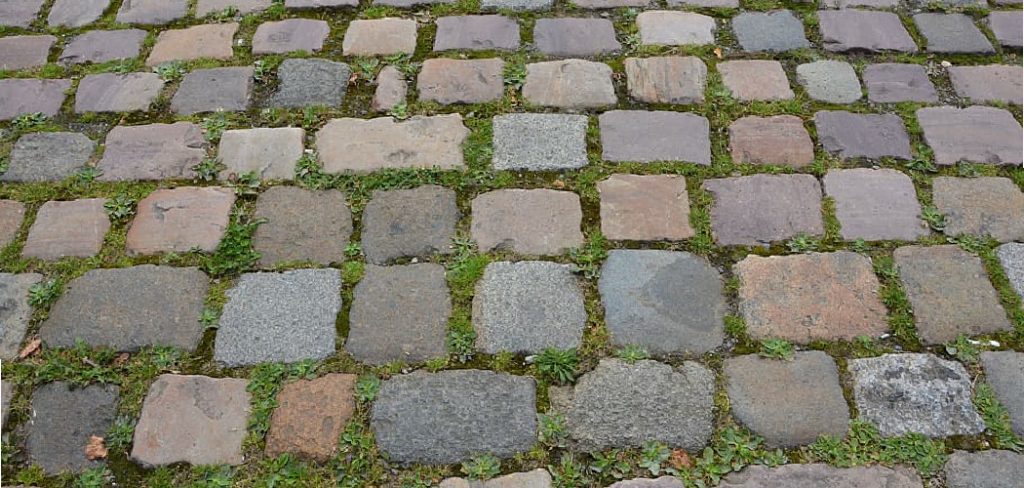
However, the process can actually be simpler than you think with the right techniques. In this post on how to dispose of concrete pavers, I’ll share my step-by-step guide for getting rid of concrete pavers yourself, without breaking your back.
From assessing whether pavers can be reused, to breaking them into manageable pieces for trash or recycling, I’ll cover all the essential steps. By the end, you’ll feel empowered to tackle this chore and reclaim valuable yard space for other projects. Let’s get started with assessing what you’ve got!
Why Proper Disposal Matters
First and foremost, it’s important to understand why the proper disposal of concrete pavers matters. While you may be tempted to simply toss them into a dumpster or leave them at the curb for trash pickup, this can have serious environmental consequences. Concrete is not biodegradable and takes up space in landfills, potentially releasing harmful chemicals into the soil and water. Additionally, improperly disposed concrete can create hazards for wildlife and even cause damage to equipment at waste management facilities. Therefore, it’s important to take the time to dispose of concrete pavers responsibly.
Needed Materials
Given below are the materials you’ll need to dispose of concrete pavers:
- Protective Gear (Gloves, Safety Glasses)
- Sledgehammer or Jackhammer
- Pry Bar
- Wheelbarrow or Sturdy Container
- Tarp
- Work Gloves and Boots
- Reciprocating Saw (Optional)
10 Simple Step-by-step Instructions on How to Dispose of Concrete Pavers
Step 1: Assess the Condition of Your Pavers
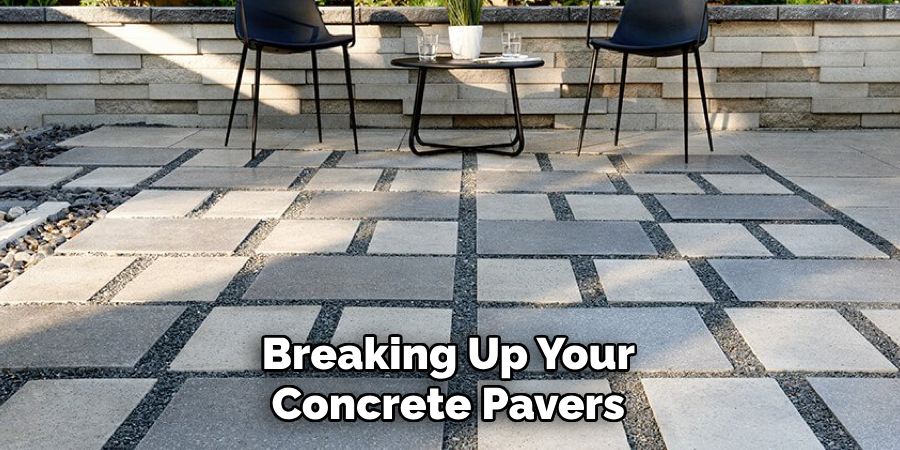
Before you begin breaking up your concrete pavers, it’s important to assess their condition. Are they cracked or damaged? If so, can they be salvaged for other projects such as edging or creating a base for a shed?
If the pavers are in good condition, consider donating them to a local charity or community organization. This can help reduce waste and give your pavers a new life in someone else’s yard.
Step 2: Prepare the Area for Work
Clear out any debris or plants around the area where you’ll be working. Lay down a tarp to catch small pieces of concrete and protect your grass from damage. Make sure to wear protective gear such as gloves and safety glasses to avoid injury. Otherwise, you can easily get cuts or small debris in your eyes while handling the pavers.
Step 3: Begin Breaking Up The Pavers
Using a sledgehammer or jackhammer, start breaking up the concrete pavers into smaller pieces. If you don’t have access to these tools, consider renting them from a local hardware store.
Work systematically and break the pavers into manageable sizes for easy handling. You can also use a reciprocating saw to cut through tough areas. Be careful not to overexert yourself and take breaks when needed.
Step 4: Collect the Broken Pieces
Once you’ve broken up all the pavers, collect the pieces and place them into a wheelbarrow or sturdy container. This will make it easier to transport them to your designated disposal area. But remember to only fill the container about halfway to avoid it becoming too heavy to move. It’s also a good idea to wear work gloves and boots to protect your hands and feet from sharp edges.
Step 5: Check for Any Reusable Pieces
Before disposing of the pavers, check for any reusable pieces that can be repurposed for other projects. For example, larger chunks can be used as landscape stepping stones or smaller pieces can be crushed and used as gravel for a driveway or pathway. This can help reduce waste and save you money on future projects.
Step 6: Dispose of the Pavers in Your Trash
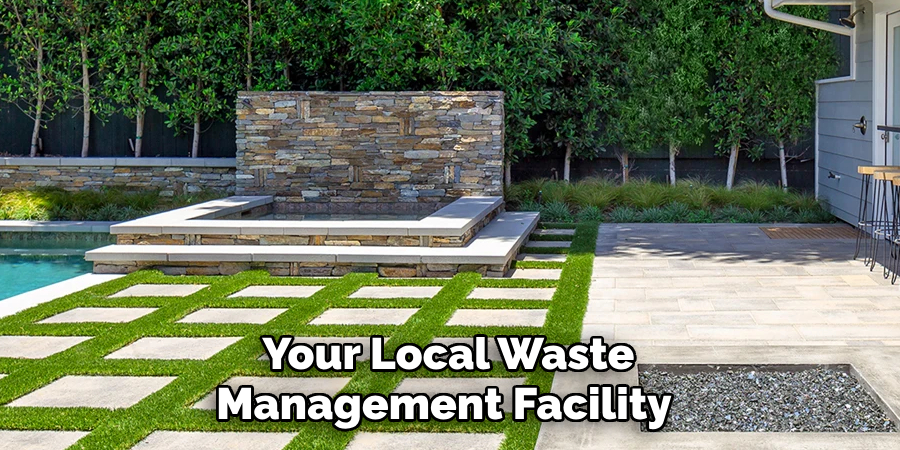
If your pavers are not reusable, you can dispose of them in your regular household trash. However, make sure to check with your local waste management facility for any specific guidelines or restrictions. You may need to place the concrete pieces in a designated bag or container before putting them into the trash.
Step 7: Recycle Your Pavers
Another option for disposal is recycling your pavers. Some recycling facilities accept concrete and will crush it into smaller pieces for use in road construction or other projects. Check with your local facility to see if they offer this service and what their requirements are for drop-off. You may need to separate the pavers from other debris or bring them in during specific hours.
Step 8: Look Into Local Disposal Options
If you have a large amount of concrete pavers to dispose of, it may be worth looking into local disposal options. Some cities offer bulk pickup services for bulky items such as concrete, while others may have designated drop-off locations for construction debris.
Check with your city or county’s waste management department to see what options are available.
Step 9: Consider Hiring a Professional
If the thought of breaking up and disposing of concrete pavers on your own is overwhelming, consider hiring a professional. They will have the necessary tools and experience to safely and efficiently dispose of the pavers for you. This can save you time and energy, and also ensure that the pavers are disposed of properly.
Step 10: Reclaim Your Yard Space!
Once all the concrete pavers have been disposed of, it’s time to reclaim your yard space! Use this opportunity to plan new landscaping or outdoor projects.
You’ll be amazed at how much bigger and more open your yard will feel without the pavers taking up space. Always remember to dispose of concrete pavers responsibly to protect the environment and avoid any potential hazards.
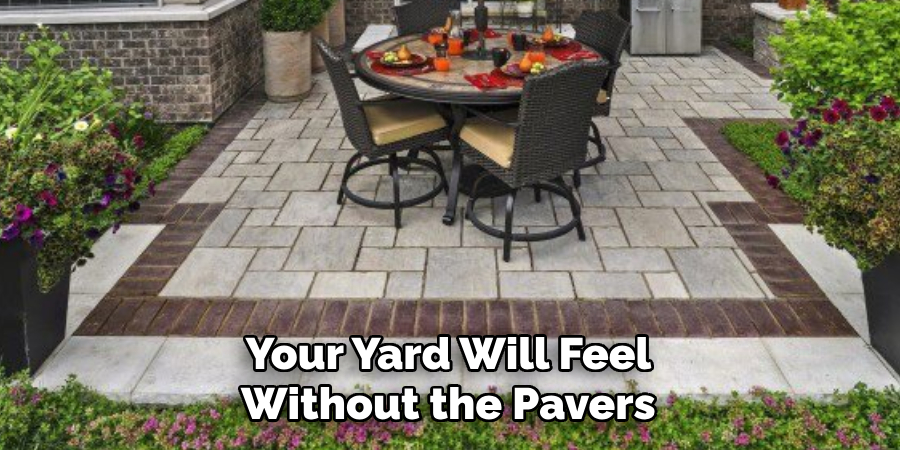
Following these simple steps on how to dispose of concrete pavers can help make the process of disposing of concrete pavers a smooth and environmentally friendly one. Remember, taking the time to properly dispose of materials can have a big impact on our planet. So always do your part and be responsible with your waste management practices. Your future self (and the environment) will thank you!
Additional Tips for Disposing of Concrete Pavers
- If You’re Using a Sledgehammer, Make Sure to Wear Safety Glasses to Protect Your Eyes From Flying Debris.
- To Reduce Noise Pollution, Consider Wrapping the Head of Your Hammer or Jackhammer in a Towel or Cloth.
- When Disposing of Concrete Pavers in Landfills, Be Mindful of Weight Limits and Do Not Overload Containers.
- Consider Hiring a Dumpster for Large Amounts of Concrete Pavers to Avoid Multiple Trips to the Disposal Site.
- If You Plan on Using a Reciprocating Saw, Make Sure It Has a Blade Specifically Designed for Cutting Concrete.
- For Smaller Pieces of Concrete, Consider Renting a Concrete Grinder to Break Them Down Even Further Before Disposing of Them.
- Always Follow Proper Lifting Techniques When Handling Heavy Pieces of Concrete.
- For Safety and Efficiency, Consider Using a Partner to Help You With Disposal Tasks.
- If possible, Repurpose or Donate Your Concrete Pavers to Give Them a New Life and Reduce Waste.
- When Using Power Tools, Make Sure to Read the Instruction Manuals Thoroughly Before Use.
- Always Research Local Recycling Options to Ensure Proper Disposal of Concrete Pavers and Other Construction Debris.
- Properly Dispose of Any Leftover Adhesives or Grout from the Paver Removal Process According to Manufacturer Guidelines.
Frequently Asked Questions
Q: Can I Throw Away Concrete Pavers in the Trash?
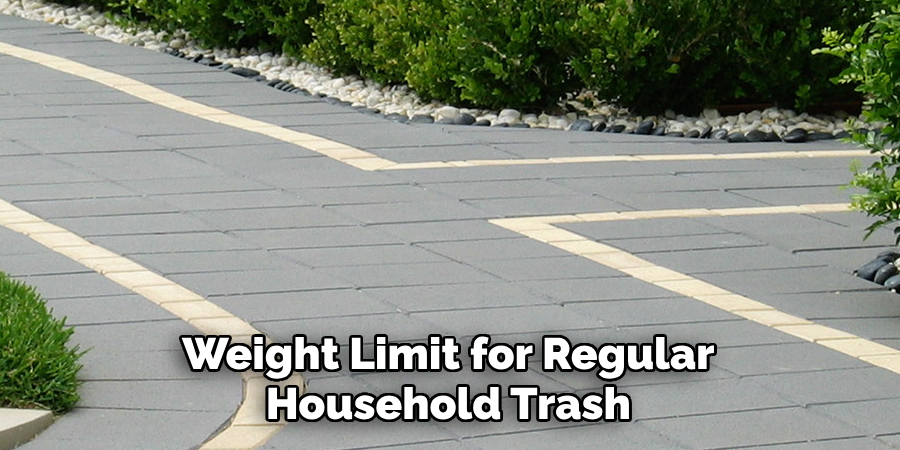
A: Yes, as long as they are not too heavy and do not exceed your waste management facility’s weight limit for regular household trash. It’s always best to check with your local facility for specific guidelines and restrictions.
Q: Can I Repurpose Concrete Pavers for Other Projects?
A: Yes, larger pieces can be used as stepping stones or smaller pieces can be crushed and used as gravel. This can help reduce waste and save money on future projects.
Q: How Do I Know If My City Offers Bulk Pickup Services for Concrete Pavers?
A: Contact your city or county’s waste management department to inquire about bulk pickup services and any specific guidelines for disposal.
Conclusion
In conclusion, concrete pavers are a versatile and durable landscaping option that can enhance the beauty of any outdoor space. However, when it comes to disposing of them, proper steps must be taken to ensure environmental responsibility and safety.
Remember to always check with local regulations and recycling centers for the best disposal options. Whether you decide to repurpose them for future projects or recycle them into new materials, it’s important to handle concrete pavers with care to minimize their impact on the environment.
By following the guidelines mentioned in this blog post and utilizing creative techniques, you can easily dispose of your old concrete pavers while also contributing towards a sustainable future.
So next time you have some old or broken pavers lying around, don’t just toss them away – get creative and give them a second life! Your contribution will not only make a positive impact on the environment but also add an artistic touch to your outdoor space. Remember, every small step counts in creating a better world for ourselves and future generations.
On that note, let’s take action today and turn our recycling efforts into a beautiful work of art! Thanks for reading this article on how to dispose of concrete pavers.
